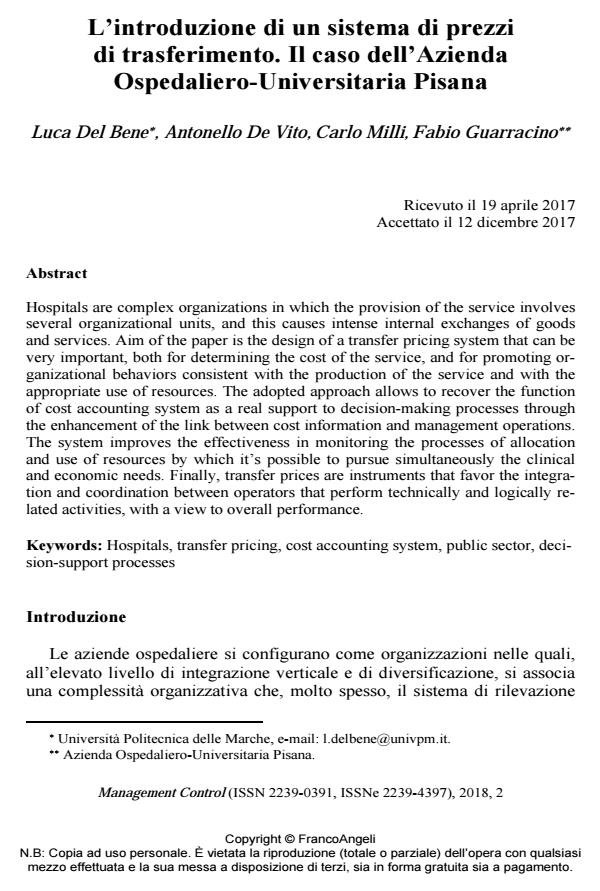L’introduzione di un sistema di prezzi di trasferimento. Il caso dell’Azienda Ospedaliero-Universitaria Pisana
Titolo Rivista MANAGEMENT CONTROL
Autori/Curatori Luca Del Bene, Antonello De Vito, Carlo Milli, Fabio Guarracino
Anno di pubblicazione 2018 Fascicolo 2018/2
Lingua Italiano Numero pagine 26 P. 35-60 Dimensione file 312 KB
DOI 10.3280/MACO2018-002003
Il DOI è il codice a barre della proprietà intellettuale: per saperne di più
clicca qui
Qui sotto puoi vedere in anteprima la prima pagina di questo articolo.
Se questo articolo ti interessa, lo puoi acquistare (e scaricare in formato pdf) seguendo le facili indicazioni per acquistare il download credit. Acquista Download Credits per scaricare questo Articolo in formato PDF

FrancoAngeli è membro della Publishers International Linking Association, Inc (PILA)associazione indipendente e non profit per facilitare (attraverso i servizi tecnologici implementati da CrossRef.org) l’accesso degli studiosi ai contenuti digitali nelle pubblicazioni professionali e scientifiche
Hospitals are complex organizations in which the provision of the service involves several organizational units, and this causes intense internal exchanges of goods and services. Aim of the paper is the design of a transfer pricing system that can be very important, both for determining the cost of the service, and for promoting organizational behaviors consistent with the production of the service and with the appropriate use of resources. The adopted approach allows to recover the function of cost accounting system as a real support to decision-making processes through the enhancement of the link between cost information and management operations. The system improves the effectiveness in monitoring the processes of allocation and use of resources by which it’s possible to pursue simultaneously the clinical and economic needs. Finally, transfer prices are instruments that favor the integration and coordination between operators that perform technically and logically related activities, with a view to overall performance.
Parole chiave:Hospitals, transfer pricing, cost accounting system, public sector, decision-support processes
Luca Del Bene, Antonello De Vito, Carlo Milli, Fabio Guarracino, L’introduzione di un sistema di prezzi di trasferimento. Il caso dell’Azienda Ospedaliero-Universitaria Pisana in "MANAGEMENT CONTROL" 2/2018, pp 35-60, DOI: 10.3280/MACO2018-002003